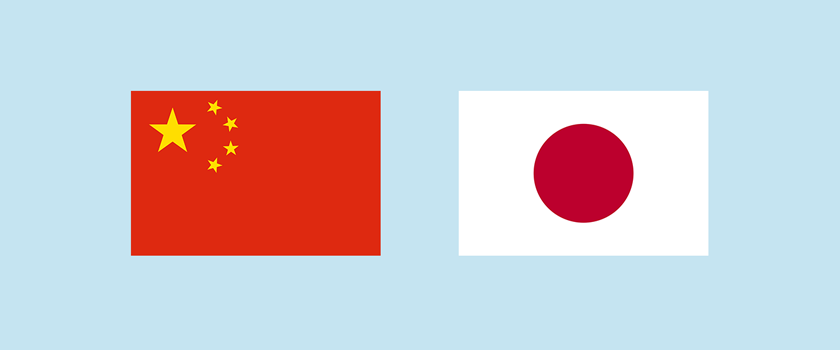Every nation’s culture is unique and it affects its language also, but when we talk about Chinese and Japanese languages, they both are very similar because they follow a similar writing pattern. The Japanese people had no writing form before, and they adopted the writing system later in the 3rd century. The Japanese are using Kanji in their writing system that has taken many loan words from the Chinese writing system called Hanzi.
Similarities between Chinese and Japanese Language
Let’s have a look at the similarities between the Chinese and Japanese language
Nouns
The First similarity between the Chinese and Japanese language are the nouns. A noun is a word used to represent a person, place, or thing. The nouns in the Chinese and Japanese language don’t have a number like singular and plural and they don’t depict gender as feminine and masculine. This makes the use of nouns easy in both languages but a little difficult to interpret because there is no use of numbers and genders and to understand the meaning of a sentence, you need to understand the context.
The Common Writing System
Although the Japanese have taken their writing system from the Chinese language, the vocabulary-related and grammatical difference is so noticeable among both languages that they made the Japanese language adopt the Chinese characters, not for their meanings but their phonetics. The other noticeable thing is that Hanzi characters don’t have the same meanings as their Kanji words.
Hiragana and Katakana are two writing systems that are followed by Chinese and Japanese people. Phonetics is the basis for the Japanese to follow the Chinese writing system. Hiragana and Katakana are the writing systems in syllabary systems, they are not based on sounds but depict syllables.
Languages shape according to culture. Sometimes the government takes steps to preserve the language. The Chinese government has started doing the same since the 1950s. They tried to standardize and simplify the Chinese language. This is why the Chinese language is called simplified Chinese. Traditional Chinese characters are used in Taiwan, Macau, and Hong Kong. The people who live in little communities near China also follow the same Chinese writing system. Japan started its language preservation in 1946 when it declared the list of simplified characters called Toyo kanji.
Use of Kanji Characters
Kanji characters are used in both the Chinese and Japanese languages. 80 percent of the Kanji characters are used in both languages and they deliver the same meaning in both languages. The Kanji characters used in Chinese and Japanese are alike and it is very difficult to distinguish between them.
Use of Numbers
The numeric system used in Chinese and Japanese languages is the same. They use the same characters to represent numbers even though they have phonetic differences.
Classifiers
Another common similarity between Chinese and Japanese language is the use of classifiers. To tell about numeric and quantitative expressions such as three sweets, four sweets, you are required to use numbers with characters that are called classifiers. Many classifiers depict nouns. For instance, if you want to say three sweets, you are required to use a numeric with the classifier that will depict sweets. The important thing to note is that the same character does not represent the same type of animals, objects, or people. The characters that are used to represent horses cannot be used to represent cats.
Pronunciation
The pitch of your accent counts a lot in delivering your message appropriately. It is called the tone of language. As the Chinese language has many dialects so it has different tones too. Mandarin has four tones. Japanese is also a tonal language but it has fewer dialects and tones than Chinese. For example, hashi means chopsticks and bridge and it can convey its correct meaning as per its pronunciation. The Japanese language can be differentiated in its writing pattern so Hashi is represented through a logogram both for chopsticks and bridge.
The tones of Kanji and Hanzi are different so they are pronounced differently. Kanji characters have two kinds of pronunciations that make it difficult for Japanese people to pronounce. Text in the Japanese language is read in two ways, Onyomi that originates from Chinese pronunciation, and Kunyomi which is original Japanese reading. The pronunciation of kanji characters is sometimes so different that Japanese natives feel hard to read.
Names and Titles
In Chinese and Japanese culture, the surname is taken before the first name. Chinese names contain two or three characters whereas Japanese names consist of four characters. In both languages, the titles and surname come before the first name.
Wrapping Up
The Chinese and Japanese writing systems are confusing for new language learners. Apart from the writing system, the most difficult part is to learn the right pronunciation. Tones are also very complex to learn as the Chinese language has a lot of tones and dialects. Both languages are full of intricacies and it takes time to learn them. The beauty of these two languages lies in nouns, writing systems, use of Kanji Characters, use of numbers, and. Classifiers. If you want to translate any of your Chinese and Japanese documents then it is better to look for a reliable language service provider who knows all the similarities and differences between these two languages and provides you with impeccable translation services.



